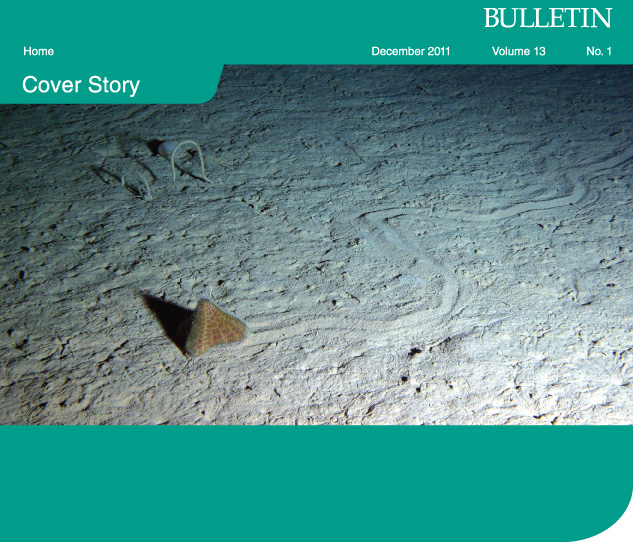
|
|
The deep sea may be a place where few can safely venture, but there is growing concern that humans may touch its depths through their contributions to climate change. Deep-sea biodiversity was previously thought to be stable, but there is now evidence that global cooling and warming may have caused fluctuations in that biodiversity over many thousands of years – challenging the traditional view that the cause was changes in food resources, via the production of plankton. The findings have implications in considering the impacts of climate change today. A HKU scientist, Dr Moriaki Yasuhara, was part of the team investigating. "When plankton die off, they fall to the bottom as a marine snow, and this provides food for scavengers and bottom feeders. Deep sea ecologists tend to emphasize surface productivity as the most important factor controlling the deep-sea biodiversity, but very few people have taken into account the temperature at the deep ocean floor as a controlling factor. My research strongly suggests that temperature is also a very important factor, although they are not mutually exclusive," he says. Number of species varies with temperature Drawing on North Atlantic fossil records of Ostracoda, a tiny invertebrate, over the past 500,000 years, Dr Yasuhara found that the number of species collected varied according to global climate changes, more specifically to changes in sea floor temperature, so in a warmer period as many as 20 species were collected per 50 individuals and in cooler periods such as ice ages, as few as five. Deep sea temperatures are stable and vary by only about 5˚ Celsius across the globe at 3,000 metres, so, "even a change of one or two degrees in sea floor temperature can be very serious for deep sea animals," he says. |
The collapse in biodiversity during ice ages happened across latitudes, but the impact was greatest in the tropical regions which have higher diversity. Biodiversity in the arctic regions is typically pretty low so the impacts were not as strong. "The findings show geographical patterns of tropical-high and polar-low diversity can be changed very dramatically due to climate change, whereas it had been thought the pattern in the deep sea was pretty stable," he says. |  Dr Moriaki Yasuhara |
Uncertain impact of today's climate change The instability in species diversity across time and geography in the wake of climate change is potentially important in today's discussions about the subject. However, the outcome of present-day global warming is very difficult to predict. Dr Yasuhara's research focuses on climate changes during the last tens-to-hundreds of thousands of years in time resolutions as short as 50 years. The warming patterns of today are too rapid to fit into a pattern. "Fossil records show climate change can affect ecological diversity and deep sea ecosystems quite strongly. Higher temperatures theoretically mean higher species diversity, but the current global warming is too rapid when compared to the records. Whether there will be an increase in species diversity or not is I think an open question. The deep see ecological structure will most likely be disturbed, but we can't really predict what will happen," he says. He is now trying to expand his research from the deep sea to the global marine environment to understand the fundamental relationship between the ecosystem and climate. |
| Back | Next | |